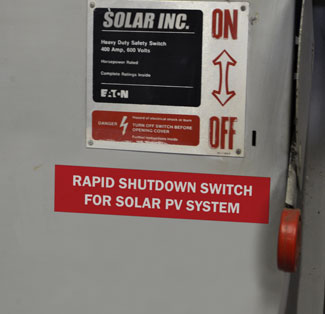Solar Energy Future Bright in California
03
February,
2023
2 MINUTE READ

A state known for its golden skylines, California will begin to amplify its usage of one of its greatest commodities. Solar will become a primary energy source for the state after regulators approved a plan to mandate the installation of solar panels on new home construction starting in 2020. This mandate helps cut energy usage and improves the state's carbon footprint, with a goal of a 40% reduction by 2030 set by Gov. Jerry Brown. As solar installation employment grows, safety will become critical to protecting workers from injuries or death.
"Under these new standards, buildings will perform better than ever, at the same time they contribute to a reliable grid," said Commissioner Andrew McAllister, an energy efficiency lead at the California Energy Commission. The other benefits of solar energy use in new homes, McAllister said, is that these structures will be more efficient, while generating their own clean energy. Homes will cost less to operate and will also produce healthier indoor air, he added.
Solar Installation Hazards
According to 2017 National Solar Job Census data, more than 250,000 Americans work in solar. The deaths of three solar installers were investigated in 2017 by the California Fatality Assessment and Control Evaluation (FACE). Pitched roofs, lack of fall protection, overhead power lines, and unguarded edges, including skylights, were among the contributing factors in those deaths, according to FACE. Other job hazards in the solar installation industry include improper lifting, incorrect ladder usage, and electrical. Solar energy workers can protect themselves by using safety glasses, hard hats, gloves, respirators, and other personal protective equipment.
During an emergency, solar panels should have the appropriate label information on them to help instruct electricians and even firefighters. In an effort to improve compliance and safety, the National Electric Code (NEC) was revised in 2017 to help communicate hazards and identify components of solar panels. Solar labeling requirements include pertinent safety information as well as proper formatting, depending on the type of system that is ready for installation. Use labels and signs to identify disconnects, conduits, source and output circuits, rapid shutdowns, general warnings, and more.

Brighten Safety Plans
Installing solar panels is dangerous work. Business owners and construction industry professionals can increase safety on installation jobs through ongoing training and safety best practices. Conduct a regular job hazard analysis of work sites and adjust safety plans accordingly. Prevent injuries from falls and other solar installation hazards by following current safety standards. Keep workers updated on safety through communication using guides, videos, signs and labels, and other forms of informative material.
RELATED RESOURCES

Work Safe and Smart in Cold and Windy Temps
As seasons change, so must approaches and methods to performing a particular task. Working smart and ...
Read
OSHA to Launch New Enforcement Measures
OSHA will place less emphasis on counting the number of inspections it conducts; instead, it has developed a ...
Read
4 Lean Secret Weapons for Next-Gen Industry
The integration of Industry 4.0 technology is fast becoming a component of lean manufacturing. Learn how ...
Read.png)


